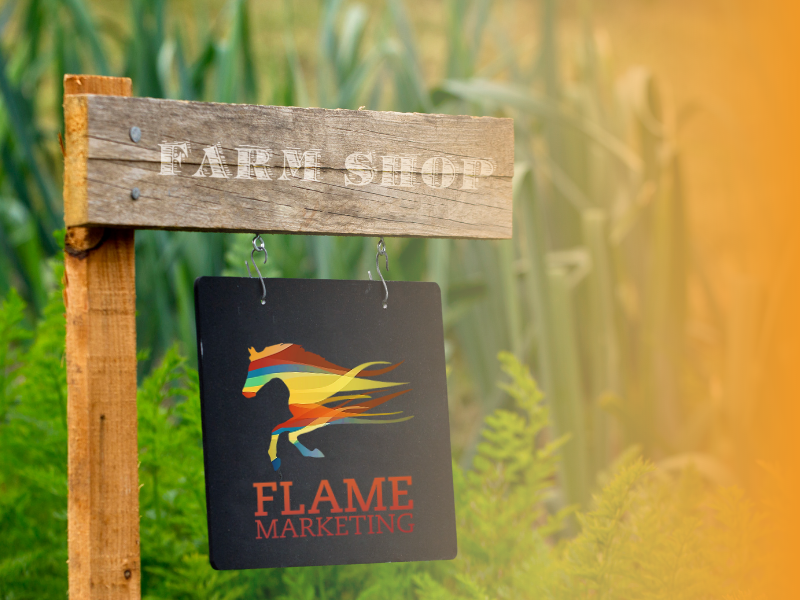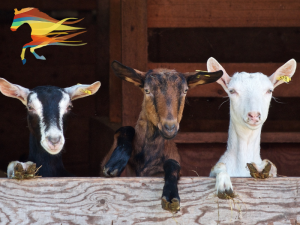“It was absolutely manic and that’s when we decided one of us needed to be here full-time, so I left my job last April,” explains Meg.
“It was better for me to leave my contracted post as I have more flexibility. I can still work the occasional shift, whereas Damian’s hours are set in stone, although ideally the best thing would be if he could come and work at home. It’s been so much easier kidding them on my own, and if I do have any problems we’ve got a very good vet.”
Last summer they sold the sucklers, retaining 30 steers, which Meg anticipates will also be sold. Compared to other livestock, she says the goats are very different – and more difficult – to look after as they are physical, temperamental, very agile and fussy with their food.
Feed and housing
Over the summer the flock was put out to grass with 24-hour access to shelter, while in winter they are housed in sheds.
Their diet consists of non-GM feed – grass and home-made stalky haylage, which has a high dry matter and high sugar content. The kids also get ad lib creep, a compound nut, from a creep feeder and the adults limited concentrates, depending on their condition and how many kids they are carrying.
Goats can often suffer scald (raw skin on their legs) due to wet conditions, although so far this has not been a problem for the Moat herd.
They are also prone to listeria, which the McNamara’s work hard to prevent by avoiding soil contamination by mole trapping, triple wrapping bales and putting an additive on them and making their own haylage as opposed to buying it in.
Unlike sheep and cows, the goats don’t develop proper immunity either, which can leave them susceptible to worms, so Meg has taught herself to carry out faecal egg checks, which she does on a regular basis.
The kids stay with their mothers while they are young and are weaned at 12 weeks, before being sent to slaughter when they reach 40kg. The females are kept to build up the herd.
Retail
Goats are slaughtered at a local butcher and packed before being returned to the farm.
“We sell the meat direct from here and customers turn up all the time. We’re quite happy with people dropping by. We have a sign up saying beep your horn, and that seems to work, although most do message to say they’re coming.
“We’ve only been selling the meat since September, so we’re still in the early stages but we’re selling everything we send to slaughter.
Cuts are priced individually with a kid leg shank costing £13.99/kg, a rack of kid or kid cutlets £18.99/kg, goat mince £13.30/kg and diced goat £14.30/kg.
Others available include kid sausages, neck of kid and breast of kid or customers can opt for half or a whole kid for £9/kg.
“A lot of our sales are through word of mouth and via Facebook and Instagram. We’re working on a website which should be live soon and I’ll also be on Twitter once I fathom it out. We’ve supplied a few butchers and hope to start supplying restaurants as well. Around here it’s quite a traditional market; we’re finding a big percentage of the local population are reluctant to try it because they think it has a goaty taste or smell. It doesn’t.”
Meg says the meat has a sweet, nutty, juicy taste, while legs steaks are much beefier.
Some of the more popular cuts include steaks and diced and minced goat.
Farm diversification facts
- 200-head Boer herd
- Kids are weaned at 12 weeks and sent to slaughter at 40kg (about five months)
- Females are kept to build up the herd
- Kids fed ad-lib creep comprising a compound nut
- Females fed concentrates depending on how many kids they are carrying
- Meat sold on the farm
Future of the farm diversification
As for the future Meg is hopeful of building a successful business with ambitions to own the largest herd in the UK.
“We’re quite interested in expanding into charcuterie as well as supplying shops, butchers and restaurants from our own farm shop, and are very hopeful that in five to 10 years’ time we’ll have the biggest meat goat herd in the UK and a really successful business.”





 business opportunity.
business opportunity.
 Compared to other livestock, goats are expensive, with a doe costing around £250, while an unproven Billy is between £600-£700. As well as starting to breed the goats, the couple continued working full-time and running the beef herd.
Compared to other livestock, goats are expensive, with a doe costing around £250, while an unproven Billy is between £600-£700. As well as starting to breed the goats, the couple continued working full-time and running the beef herd.

